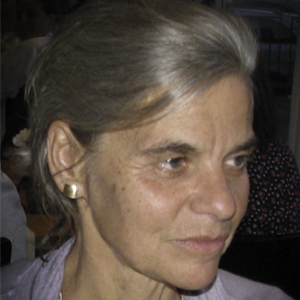What’s new with DNA and RNA?
Eukaryotic gene expression is regulated at multiple layers. This session will cover emerging new mechanisms of gene expression regulation, centered around DNA and RNA. We will hear updates on regulation at the nucleosome structure and chromatin conformation level, how noncoding RNAs could impact transcription, and RNA modifications in post-transcriptional gene expression regulation. This session also will introduce diverse modern imaging technologies to visualize transcription activity and spatial transcriptome.
Keywords: chromatin structure, noncoding RNA, RNA modifications, super-resolution imaging, spatial transcriptome
Who should attend: students, postdocs and anyone interested in gene expression regulation, nucleosome structure and chromatin conformation, noncoding RNA and RNA modifications, super-resolution imaging and spatial transcriptome
Theme song: "The DNA Song" by Jam Campus (parody of "Trap Queen" by Fetty Wap)
This session is powered by nucleic acids.
Talks
- Cracking the nucleus: Finding order in chaos — Clodagh O'Shea, Salk Institute
- EM structures of nucleosomes with chaperones — Karolin Luger, University of Colorado Boulder
- Structural mechanism of human telomerase holoenzyme — Kelly Nguyen, Medical Research Council Laboratory of Molecular Biology
- Studying DNA-related processes on DNA curtains — Ilya Finkelstein, University of Texas at Austin
- m6A in the action of regulating the regulators — Kathy (Fange) Liu, University of Pennsylvania
- Jeannie Lee, Massachusetts General Hospital
- RNA methylation multitasking on chromatin — Blerta Xhemalce, University of Texas at Austin
- RNA methylation in gene expression regulation — Chuan He, University of Pennsylvania
- Visualizing RNA in life cells — Timothy Stasevich, Colorado State University
- Visualizing the dynamic genome during development, Alistair Boettiger, Stanford University
- 3D in situ RNA sequencing — Xiao Wang, Broad Institute and Massachusetts Institute of Technology
- Engineering the repetitive 3D genome in human disease— Jennifer Phillips–Cremins, University of Pennsylvania
Learn more
Check out all ten thematic symposia planned for the 2022 ASBMB annual meeting:
- Diversity, equity and inclusion
- Protein machines and disorder
- Signaling
- Quality control in organelles
- Metabolism
- Enzymology
- RNA/DNA
- Membranes/lipids
- Glycobiology
- Education and professional development
Enjoy reading ASBMB Today?
Become a member to receive the print edition four times a year and the digital edition monthly.
Learn moreFeatured jobs
from the ASBMB career center
Get the latest from ASBMB Today
Enter your email address, and we’ll send you a weekly email with recent articles, interviews and more.
Latest in Science
Science highlights or most popular articles

Bacteriophage protein could make queso fresco safer
Researchers characterized the structure and function of PlyP100, a bacteriophage protein that shows promise as a food-safe antimicrobial for preventing Listeria monocytogenes growth in fresh cheeses.

Building the blueprint to block HIV
Wesley Sundquist will present his work on the HIV capsid and revolutionary drug, Lenacapavir, at the ASBMB Annual Meeting, March 7–10, in Maryland.

Gut microbes hijack cancer pathway in high-fat diets
Researchers at the Feinstein Institutes for Medical Research found that a high-fat diet increases ammonia-producing bacteria in the gut microbiome of mice, which in turn disrupts TGF-β signaling and promotes colorectal cancer.

Mapping fentanyl’s cellular footprint
Using a new imaging method, researchers at State University of New York at Buffalo traced fentanyl’s effects inside brain immune cells, revealing how the drug alters lipid droplets, pointing to new paths for addiction diagnostics.

Designing life’s building blocks with AI
Tanja Kortemme, a professor at the University of California, San Francisco, will discuss her research using computational biology to engineer proteins at the 2026 ASBMB Annual Meeting.

Cholesterol as a novel biomarker for Fragile X syndrome
Researchers in Quebec identified lower levels of a brain cholesterol metabolite, 24-hydroxycholesterol, in patients with fragile X syndrome, a finding that could provide a simple blood-based biomarker for understanding and managing the condition.


